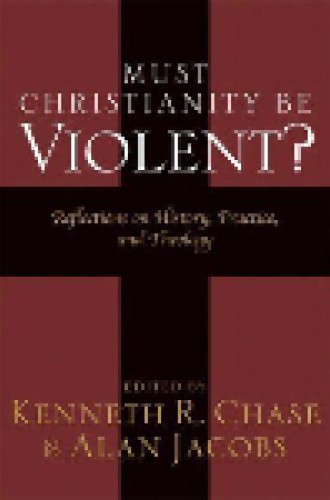Must Christianity Be Violent?
Religion may be killing us. The good news is that in our post-9/11 world there is a widespread concern about religion and violence. A December 2003 Minnesota poll, for example, showed that 77 percent of respondents attributed a fair amount of the cause of the world’s wars and conflicts to religion. The bad news is that religious violence is almost always seen as a problem for other traditions, not one’s own.
In the poll just cited, for example, 34 percent of the mostly Christian respondents said that Islam is more likely than Christianity to encourage its believers to be violent. Though our “Christian nation” was waging wars in Afghanistan and Iraq at the time, few Christians saw a relationship between Christianity and violence. How could a country in which 84 percent of adults claim to follow Jesus, who taught love of enemies and embodied nonviolence, be the most militarized nation in the history of the world—a nation whose military spending exceeds that of all other countries combined?
Though religiously justified violence is common to many religions, people rarely kill each other over religious differences alone. They use God, religion and sacred texts to justify violence and killing when conflicts over land, resources, oppression, discrimination or other historical grievances escalate. Though one is Muslim and the other Christian, there are eerie similarities between the violence-justifying rhetoric of Osama bin Laden and that of President Bush. Each poses the conflict with the other as a struggle between good and evil. Each justifies the death of civilians by citing the depth of evil to be countered. Each believes that the grave depravity of the other can be met only with lethal violence. Each invokes God’s name and his religion’s respective sacred texts to justify violence against the other. Each uses religious language to mobilize supporters.
With these questions and issues in mind, I read with interest and disappointment Kenneth Chase and Allan Jacobs’s book, a collection of papers presented at a March 2000 conference at Wheaton College’s Center for Applied Christian Ethics. (Some of the contributors revised their chapters in light of the 9/11 terrorist attacks.) The book’s title raises a serious question, but the answer is never in doubt. Chase sets the apologetic tone evident throughout: “Too often, theological responses to the charge of Christianity’s complicity [with violence] have granted too much to the accuser, and orthodox biblical teaching has been compromised.” In other words, though the book will acknowledge Christian complicity in violence, violence will not be allowed to challenge evangelical theology.
Throughout the volume we hear that Christians were guilty of horrific violence against indigenous peoples during various conquests, but, the writers stress, some Christians defended the Indians; that many Christians actively or tacitly supported the Holocaust, but a minority rescued Jews; that a great deal of violence and destruction is traceable to religion generally and to Christianity specifically, but the world is a better place because of religion and because of Christianity. The book asserts that a “fair assessment of causation demonstrates that Christians have acted, on balance, less violently than others; furthermore, without Christians the world would be in a much worse situation than it is now.”
There are chapters that transcend the editors’ apologetic enterprise. Joseph Lynch investigates the mindset, theological views and biblical images of knights who joined the bloody Crusades. If the editors had taken his analysis seriously, it would have made it more difficult for them to keep violent images of God unexplored and evangelical theology intact. Victoria Barnett’s analysis of how a “history of nationalism and subservience to state authority” led the German Evangelical Church to support oppression of Jews in Nazi Germany is illuminating, but it is not balanced by any similarly deep exploration of the relationship between Christianity and violence in our present context of uncritical patriotism and militaristic nationalism. Similarly, James Juhnke’s insightful discussion of how to teach history through the lens of nonviolence rather than of war conflicts with the volume’s equation of pacifism with passivity and its failure to explore the potential power of active nonviolence.
Chase and Jacobs’s book asks the right question, but its predetermined deference to evangelical theology leaves many important issues unexplored. Violent images of God, violent explanations of history and violent expectations of the end-time are dominant themes in the Bible, Christian liturgies and the Qur’an, yet few Jews, Christians or Muslims are willing to explore relationships between human violence and the violent texts in their sacred books.
Similarly, though biblical themes such as good versus evil, the chosen people and apocalyptic end-time scenarios lie at the heart of the worldviews of Christian advocates of imperial U.S. foreign policies, these destructive theological themes and the policies they sanction are rarely scrutinized. Similarly unexplored is the profound clash between the nonviolent example of Jesus and violent expressions of Christianity that sanction a militarized foreign policy. Instead of insulating evangelical theology from challenges posed by violence, we should allow Jesus and the tragedy of violence done in God’s name to challenge our theological assumptions. Our survival may depend on it.





